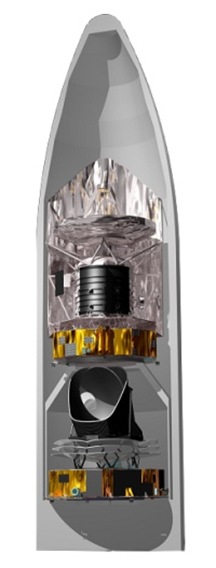Scheduled for co-launch by the Ariane 5 launcher in July-August of this year, the Herschel and Planck spacecraft will separate shortly after launch and station themselves in separate Lagrange point 2 positions approximately 1.5 million km (930,000 millions miles) from Earth.
Herschel is shown in the upper portion of the figure at left. Planck is in the lower portion of the figure.
Herschel will contain the largest primary mirror ever deployed in space at 3 meters, or 11.5 feet. It will be the first space observatory ever to study the far infrared and sub-millimeter waveband, something that is very difficult to accomplish from ground based observatories. After placement in orbit, commissioning will take six months with a planned mission length of three years.
Using a liquid helium cryostat, its telescope and instruments will be cooled to near absolute zero enabling it to probe the cool universe for information on how stars and galaxies formed and evolved.
Planck will carry out the most accurate survey ever of the cosmic microwave background radiation permeating the universe. Measurements of the temperature of the CMBR is estimated to be within a millionth of a degree Celsius.
Named after Max Planck (1858-1947), the founder of quantum theory, the mission will complement and improve upon the data provided by NASA’s WMAP spacecraft.




